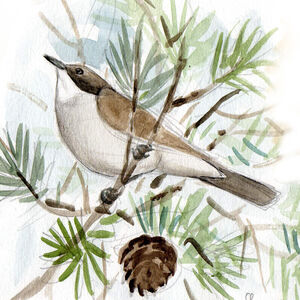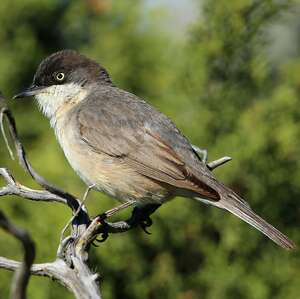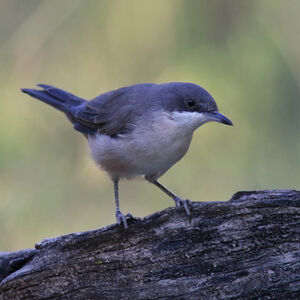Western Orphean Warbler
Curruca hortensis - Fauvette orphée
Identification
Subspecific information 2 subspecies
- Curruca hortensis hortensis (sw Europe, nw Africa)
- Curruca hortensis cyrenaicae (ne Libya)
Foreign names
- Fauvette orphée,
- Curruca mirlona occidental,
- toutinegra-real,
- Orpheusgrasmücke,
- dalos poszáta,
- Westelijke Orpheusgrasmus,
- Bigia grossa,
- herdesångare,
- Punersanger,
- penica záhradná,
- pěnice mistrovská,
- Mestersanger,
- lännenorfeuskerttu,
- tallarol emmascarat,
- Óðsöngvari,
- lutniczka zachodnia,
- parka ķauķis,
- svetlooka penica,
- Певчая славка,
- メジロムシクイ,
- 歌林莺,
- herdesångare,
- 西方動聽林鶯,
Voice song and call
Habitat
Behaviour character trait
Dietfeeding habits
Reproduction nesting
Threats - protection
IUCN conservation status
Extinct
Threatened
Least
concern
concern
Extinc
in the Wild
in the Wild
Near
threatened
threatened
Not
evaluated
evaluated
EX
EW
CR
EN
VU
NT
LC
NE
In France, the status of the Western Orphean Warbler needs to be confirmed. There is, however, a sharp decline in its range which is currently concentrated on the Mediterranean coastline. This phenomenon may be explained by the changes of the environment due to the abandonment of traditional agricultural practices (such as sheep and goat grazing).
Sources of information
- IOC World Bird List (v15.1), Gill, F and D Donsker (Eds). 2025-12-07.
Other sources of interest
 Specification sheet created on
28/10/2023 by Alexandre Knochel with help of Georges Olioso
Specification sheet created on
28/10/2023 by Alexandre Knochel with help of Georges OliosoTranslation by AI Oiseaux.net
© 1996-2026 Oiseaux.net
- Accipitriformes
- Aegotheliformes
- Anseriformes
- Apodiformes
- Apterygiformes
- Bucerotiformes
- Caprimulgiformes
- Cariamiformes
- Casuariiformes
- Charadriiformes
- Ciconiiformes
- Coliiformes
- Columbiformes
- Coraciiformes
- Cuculiformes
- Eurypygiformes
- Falconiformes
- Galliformes
- Gaviiformes
- Gruiformes
- Leptosomiformes
- Mesitornithiformes
- Musophagiformes
- Nyctibiiformes
- Opisthocomiformes
- Otidiformes
- Passeriformes
- Pelecaniformes
- Phaethontiformes
- Phoenicopteriformes
- Piciformes
- Podargiformes
- Podicipediformes
- Procellariiformes
- Psittaciformes
- Pterocliformes
- Rheiformes
- Sphenisciformes
- Steatornithiformes
- Strigiformes
- Struthioniformes
- Suliformes
- Tinamiformes
- Trogoniformes



























